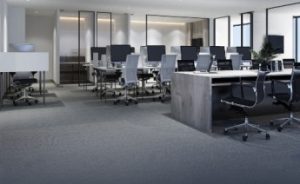An office space has to be many things. A space for collaboration, thinking, productivity, friendship, impact, etc. So of course the way the space looks (aesthetics such as a mural) is important but equally so is what the space can do (functionality such as raised access flooring).
Here are 3 helpful ways to differentiate between the two as you try to prioritize functionality.
Purpose and Use
You want functionality because it’s all about making the space work for what it’s meant for. Specifically, in an office environment, it’s about an arrangement that means tasks flow smoothly and everyone finds it easier to be that much more productive.
Every office environment is uniquely different. Still, there are some general ways to get this done. For example:
- Arranging desks and other such tools logically so the space doesn’t feel like an obstacle course
- Opting for ergonomic furniture that keeps your team comfortable and away from backaches
- Keeping tools and supplies in arm’s reach, or else at a reasonably accessible distance
Imagine how much work could be done in an office where desks are set up for impromptu brainstorming and you can grab a pen without a treasure hunt. Plus, ergonomic chairs and standing desks directly or indirectly reduce the need for sick days.
User Experience vs. Visual Appeal
There’s a reason why the concept of user experience is so widely recognized and used across multiple industries. It’s all about keeping the team happy, and that definitely means a space that is optimized for their needs.
How do you make your office users happy? Try:
- Shuffling desks to match team dynamics- frequently or infrequently depending on feasibility
- Lighting and sound can set the mood – sometimes enough to drive up productivity – and you want to take advantage with task and natural lighting as well as soothing sounds
Picture an office where workstations are strategically arranged to encourage team interaction and noise-canceling features and adjustable lighting means that concentration is a lot easier.
Flexibility and Adaptability
As an office space has to be many things, you want to really prioritize flexibility and adaptability; a space that is dynamic and adaptable to changing needs so that scalability is not impossible or impractical.
How?
- You want modular furniture that can be easily rearranged so that different team sizes are easily accommodated
- Why not heavily invest in upgradable technology solutions that mean support for changing work requirements?
- It’s a good idea to have spaces designed such that it has many different uses – like meeting rooms that convert into collaborative workspaces
Think of an office where desks slide around like puzzle pieces for different team setups and meeting rooms with flexible technology support for different types of presentations or brainstorming sessions.
The benefits of a functional workspace cannot be overstated. Factor in these tips to balance functionality and aesthetics in your space.
